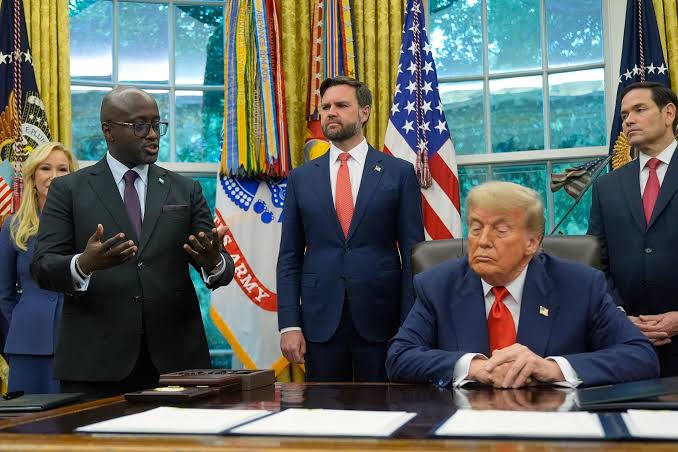
A sweeping wave of new tariffs introduced by U.S. President Donald Trump has officially taken effect, impacted dozens of countries and signalling a major escalation in the administration’s push to reshape global trade.
“IT’S MIDNIGHT!!! BILLIONS OF DOLLARS IN TARIFFS ARE NOW FLOWING INTO THE UNITED STATES OF AMERICA!” Trump posted on social media, minutes after the policy kicked in at midnight in Washington, D.C.
The new measures include a 50% tariff on India, set to take effect on August 27 unless New Delhi halts its purchases of Russian oil, and a threatened 100% tariff on foreign made computer chips, part of Trump’s broader push to bring high-tech manufacturing back to the U.S.
The chip tariff announcement came on the heels of a major move by Apple, which recently unveiled a $100 billion investment in the United States after mounting pressure from the White House to localize production.
Despite Trump’s aggressive stance, leading semiconductor firms with U.S. investments, including TSMC, Samsung, and SK Hynix, appear to be exempt from the new levies, according to statements from Taiwanese and South Korean officials. TSMC declined to comment, while the White House has yet to issue a formal clarification.
The administration released a revised list of import duties last week and set an August 7 deadline for trade partners to strike deals or face steep penalties. While some allies — including the UK, Japan, and South Korea, have already secured partial exemptions, others are grappling with the fallout.
Southeast Asian nations, particularly export-reliant economies like Laos and Myanmar, were hit hardest with tariffs of up to 40%. Analysts say the moves appear to target countries with strong trade ties to China.
Meanwhile, the European Union agreed to a framework deal involving a 15% tariff on goods from the bloc. Taiwan received a 20% tariff, which President Lai Ching-te described as “temporary,” adding that negotiations with Washington were ongoing.
Canada’s tariff rate was raised from 25% to 35%, with Trump accusing Ottawa of failing to curb the cross-border flow of fentanyl and other narcotics. Still, most Canadian exports are shielded by the United States-Mexico-Canada Agreement (USMCA).
Talks with Mexico continue, with higher tariffs paused for another 90 days.
India, one of the world’s largest energy importers, has condemned the new 50% tariff as “unfair, unjustified and unreasonable,” vowing to defend its national interests. Brazil also found itself on Trump’s tariff list, accused of attacking U.S. tech companies and targeting former President Jair Bolsonaro with politically motivated charges.
As the global trading order adjusts to the new landscape, Washington and Beijing are racing to reach an agreement to extend their existing 90-day pause on tariffs, which is set to expire on August 12.